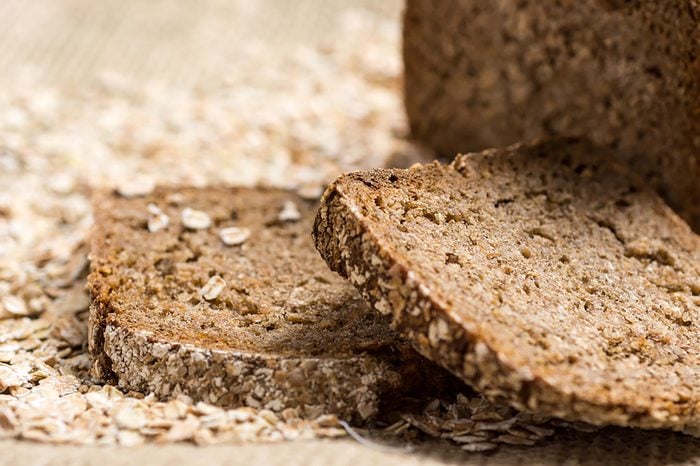
Why do I need fiber?
Virtually every weight-loss program welcomes “good carbs” as part of a healthy, lean, long-term diet. “Good carbs” refers to complex carbohydrates, foods like whole grains, nuts, beans, and seeds that are composed largely of complex sugar molecules, requiring lots of time and energy to digest into the simple sugars your body needs for fuel.
One of the biggest benefits of foods rich in complex carbs is that they are good sources of fiber. Fiber, in basic terms, is the indigestible parts of plant foods. It is the husk on the grain of wheat, the thin strands in celery, the peel on the apple, the casings on edible seeds. Fiber protects you from heart disease, cancer, and digestive problems. Depending on the type of fiber (there is more than one!), it lowers cholesterol, helps with weight control, and improves blood sugar levels. Check out the reasons why fiber is such a big deal and what happens when you increase your intake.
Bottom line: This is one nutrient you don’t want to miss. Yet the average American eats less than 12 grams of fiber a day—far below the recommended 25 to 30 grams. Here’s how to sneak “good carbs” and extra fiber into your daily diet with a minimum of effort.
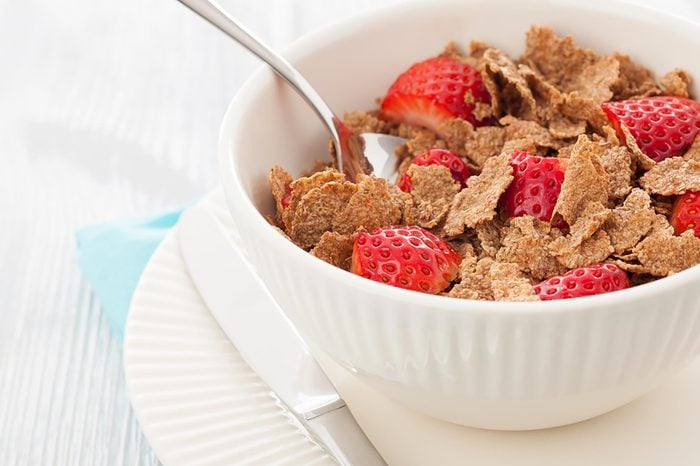
Eat cereal every day for breakfast
Ideally, aim for whole grain, unsweetened cereal with at least 4 grams of fiber per serving. In fact, eating breakfast cereal can to improve blood pressure, cholesterol, and blood sugar. Healthy, high-fiber cereals you might want to consider include Kellogg’s All-Bran Original, Kashi GOLEAN, and General Mills Fiber One. (Love bran? Be sure to try this bran muffin recipe this nutritionist swears by.)
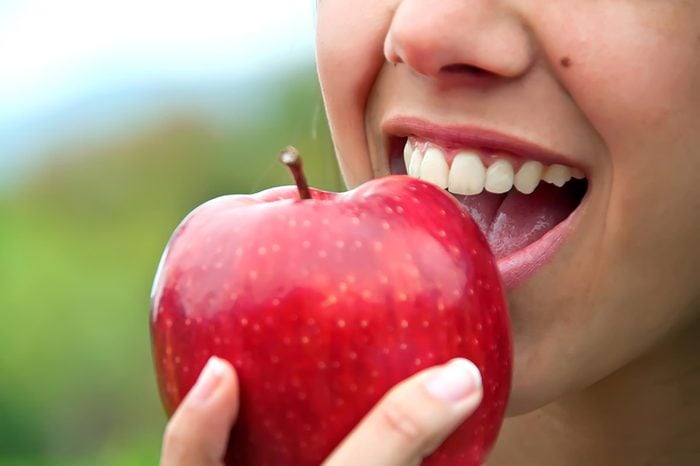
Eat two apples every day
Not just to keep the doctor away, but because apples are a good source of pectin, a soluble fiber that contributes to a feeling of fullness and digests slowly. Research shows that pectin intake results in lower overall calorie intake. Check out these healthy foods that are even more nutritious than you realized.

Make a breakfast yogurt mix one day each week
Take one small container of yogurt and mix in 1/3 cup All-Bran cereal, 1 tablespoon ground flaxseeds, and 5 large, diced strawberries for a whopping 12.2 grams of fiber—nearly half your daily allowance!

Eat baby carrots and broccoli florets dipped in hummus
You’ll fill up the empty space in your tummy while getting about 5 grams of fiber in each cup of veggies. And, hummus contains fiber too! Eat this as your afternoon snack three days a week. Here’s what happens to your body when you don’t eat enough fruits and veggies.

Keep a container of trail mix in your office for the munchies
Mix together almonds, raisins, a high-fiber cereal, and some chocolate-covered peanuts. Allow yourself one small handful for a sweet, yet high-fiber, snack.
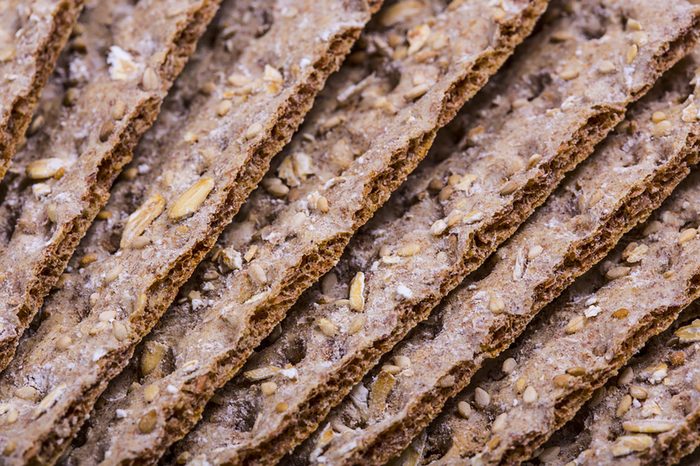
Switch to whole-grain crackers
You’d never think a tiny cracker can make a difference, but one regular whole wheat cracker has 1/2 gram of fiber. Ten crackers give you 5 grams of fiber. So next time, spread your nut butter on whole-grain crackers (look for natural nut butter to avoid trans-fats). Here are some tips for eating more whole grains.

Mix your regular cereal with the high-test stuff
Okay, we’ll be honest. We wouldn’t want to face an entire bowl of All-Bran either. But just 1/3 cup packs a walloping 8.5 grams of fiber. Mix it with an equal amount of, say, Apple Cinnamon Cheerios and you’ll barely know it’s there (but you will be one-third of the way to your daily fiber intake).
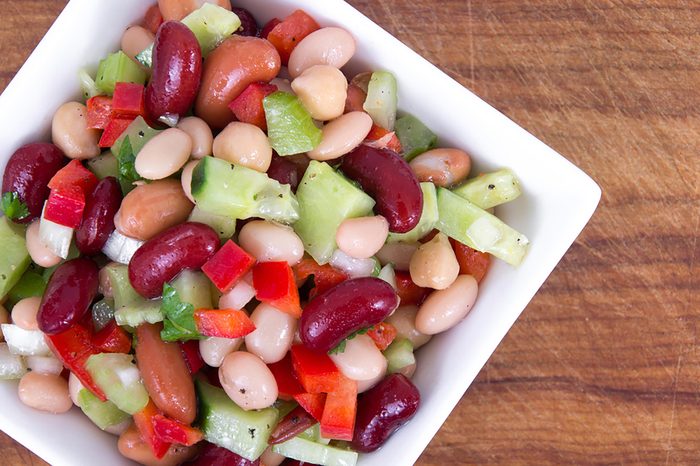
Add beans to your salad
All beans contain about 7 grams of fiber in just 1/2 cup! Vary it up with black beans, white beans, pintos, chickpeas, kidney beans, fava beans, cannellini beans, and red beans.

Make sure that the first ingredient has the word “whole” in it
The 2015-2020 Dietary Guidelines for Americans recommend to make half of your grains, whole. Examples of this, “whole wheat,” or “whole grain.” If it says multi-grain, seven-grain, nutri-grain, cracked wheat, stone-ground wheat, or enriched wheat, it’s not whole wheat, and thus is lacking some of the vitamins and minerals, not to mention fiber, of whole grains.

Every week, try one “exotic” grain
How about amaranth, bulgur, farro, freekeh or wheat berries? Most are as simple to fix as rice, yet packed with fiber and flavor. Mix in some steamed carrots and broccoli, toss with olive oil and a bit of Parmesan or feta cheese, maybe throw in a can of tuna or a couple of ounces of cut-up chicken, and you’ve got dinner. Or serve as a side dish to chicken or fish. Make sure all grains you try are whole grains.

Once a week, make pearl barley
Make pearl barley (which doesn’t require any soaking before cooking) as a side dish. One cup sports 10 grams of fiber, nearly half your daily allotment. Barley can be dressed up as a breakfast cereal, a side dish, or a rice substitute. There are plenty of health benefits of barley.

Sneak in oatmeal
Oatmeal’s not just a breakfast player (but it sure is a tasty morning choice). Use regular oatmeal in place of bread crumbs for meatloaf and meatballs, sprinkle it atop casseroles and ice cream, bake it into cookies and muffins, and add it to homemade breads. Stay away from the flavored instant oatmeal mixes to cut back on your sugar intake. Enjoy your morning oatmeal with a poached egg, avocado slices or other toppings you never thought to try.
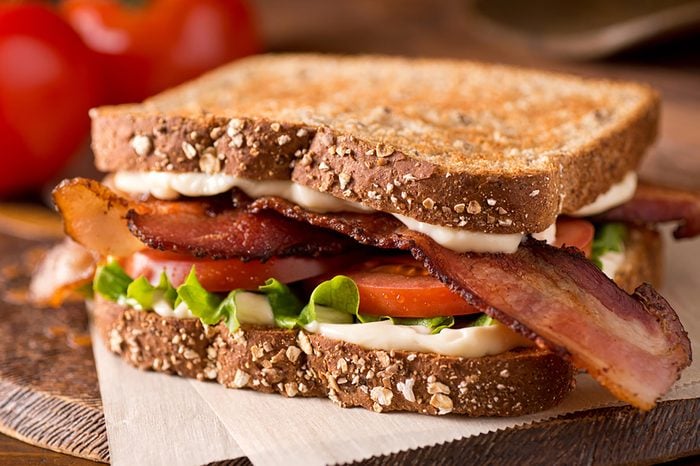
Use whole-wheat bread to make your sandwich every day
Even sandwich shop chains offer whole-wheat options for lunchtime munching. If you want to gradually break into the whole-wheat club, use whole-wheat bread as the bottom slice of your sandwich and regular bread as the top layer. Eventually, make the healthy switch to whole grains. Look for bread with at least 4 grams of fiber per slice.
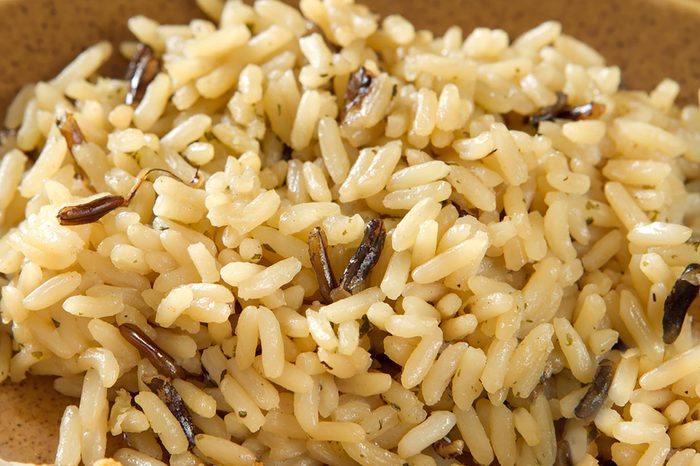
Every week, switch from a white grain to a brown grain
So instead of white rice, you switch to brown rice. Instead of regular pasta, you switch to whole-wheat pasta. Similarly, whole-wheat pitas, whole-wheat English muffins, whole-wheat tortillas, whole-wheat couscous instead of regular. Within two months, you should be eating only whole grains, and should have increased your daily fiber consumption by an easy 10 grams without radically changing your diet! Ancient grains like amaranth have surprising health benefits.

Spread your sandwich with 1/2 cup hummus
Bam! You just got 7.5 grams of fiber in a tasty package. Lay some spinach leaves, cucumber slices, shredded carrots, and a tomato slice atop for another couple of grams. You can always switch things up with these easy-to-make hummus recipes.

Make beans a part of at least one meal a day
They’re packed with fiber (15 grams in just a cup of black beans) and, since they come canned, so easy to use. Just rinse before using to remove excess sodium. Here are some tips for getting your beans:
- Puree a can of cannellini beans for a tasty dip. Add 2 cloves garlic and a tablespoon each of lemon juice and olive oil to the blender. Use as a dip for veggies and whole-grain crackers.
- Spread nonfat refried beans on a whole-wheat burrito and sprinkle with chopped chicken and shredded cheese.
- Use 1/2 cup black beans and salsa as a filling for your morning omelet.
- Make a bean salad side dish with canned black beans, fresh or frozen corn kernels, chopped cilantro, chopped onion, and chopped tomato. Drizzle with olive oil and a dash of vinegar, salt, and pepper.
- Make your own special chili pizza. Top a prepared (whole wheat) pizza crust with some kidney beans, shredded cheese, and ground turkey cooked with chili flavorings.
- Start serving edamame (soybeans) as a side dish. You’ll get 4 grams of fiber in 2/3 cup of the sweet legumes, not to mention the cancer-fighting phytonutrients inherent in soy. Soy has more benefits than you can imagine.

Add pureed cauliflower to mashed potatoes
Boost your fiber without even noticing a taste difference. Veggies like cauliflower improve satiety, so check out the most filling fruits and vegetables.
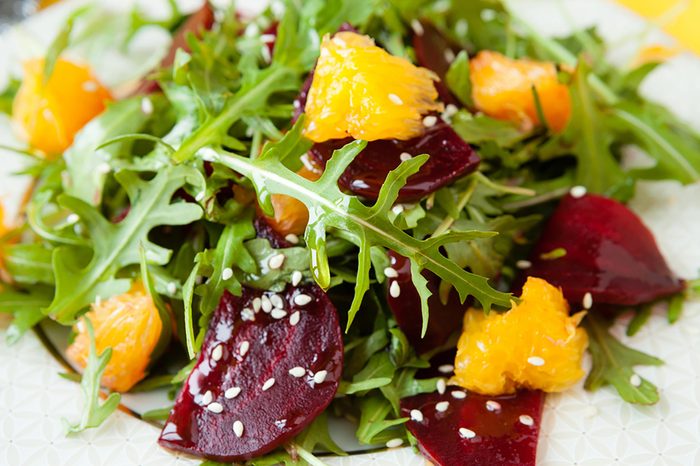
Have a beet salad for dinner
These bright red veggies have virtually no fat, no cholesterol, no sodium, quite a bit of potassium, and 2 grams of fiber. Try roasting whole, peeled beets for 45 minutes, chilling, then dicing into a summer salad. You can even buy beets already roasted in the produce section of your grocery store.
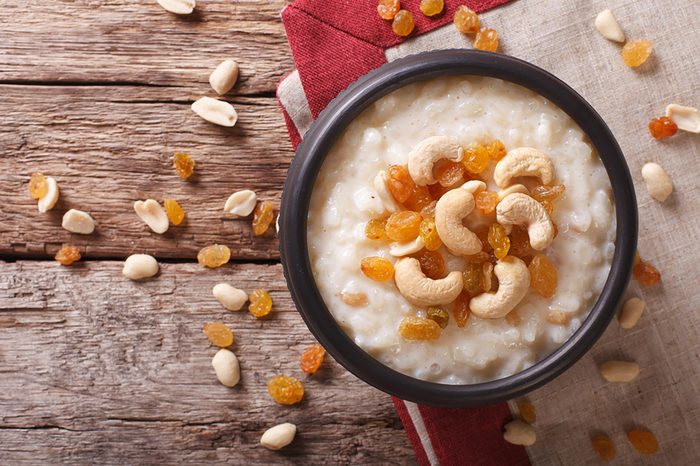
Make rice pudding for dessert tonight
Dessert with fiber? Yes, please! Only instead of white rice, use brown. Your family will thank you!

Snack on popcorn
The microwave variety works just fine, but we prefer air-popped popcorn without the oil. Each cup of popcorn delivers 1.2 grams of fiber.

Switch to whole-wheat flour when baking
You can start by going half and half, eventually using only whole-wheat flour for all your cooking needs. Want to know the real difference between whole wheat and whole grain?

Throw some flaxseeds or wheat germ to batter
They add crunch to your cookies, muffins, and breads—and loads of fiber. Learn more about the nutritional benefits of flaxseeds.
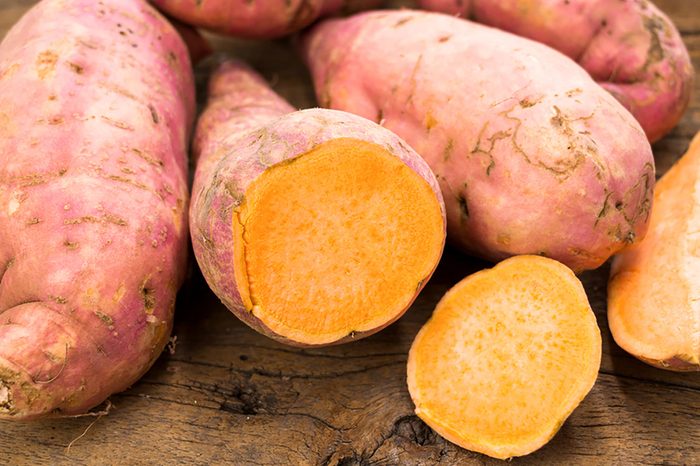
Eat the skin of your baked and sweet potatoes
Eating baked potatoes with the skin instead of mashed ups the fiber at least 3 grams (depending on the size of the potato).

Start every dinner with a mixed green salad
Not only will it add fiber, but with a low-calorie vinaigrette dressing, it will partially fill you up with very few calories, and thus offers great benefits in weight loss/control. Research shows that salad dressing or olive oil helps you absorb the nutrients in greens.
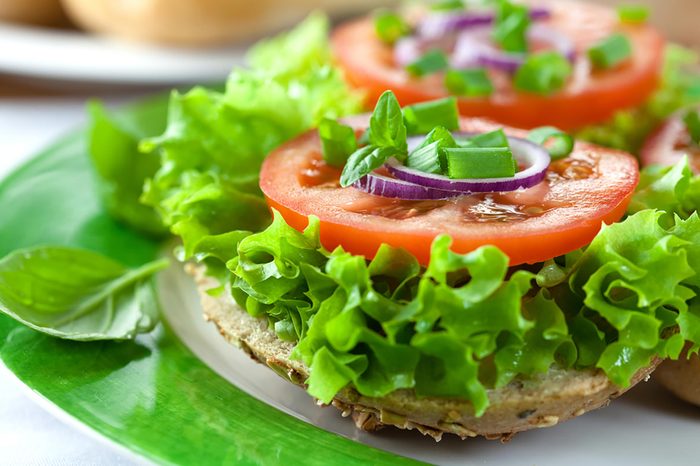
Always add lettuce and tomato slices rather than cheese to sandwiches
Such a simple swap! Not only do they add fiber, but they also reduce calories.
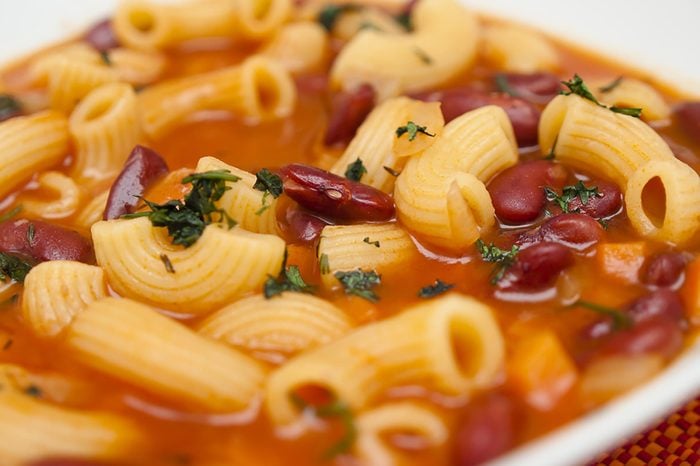
Use beans or lentils as your main protein source once or twice a week
Try classic simple entrees such as pasta e Fagioli, bean burritos, lentil soup.
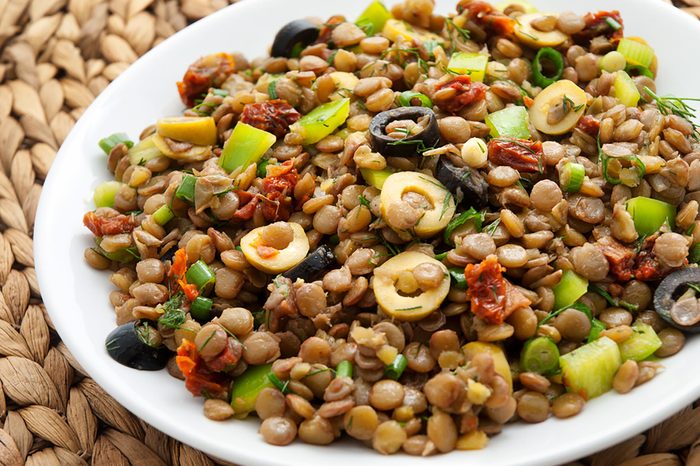
Make your fiber sources suit the seasons
A cold lentil salad, or corn and black bean salad in summer, then vegetarian chili in winter. Don’t miss these delicious ways to add beans to your diet.
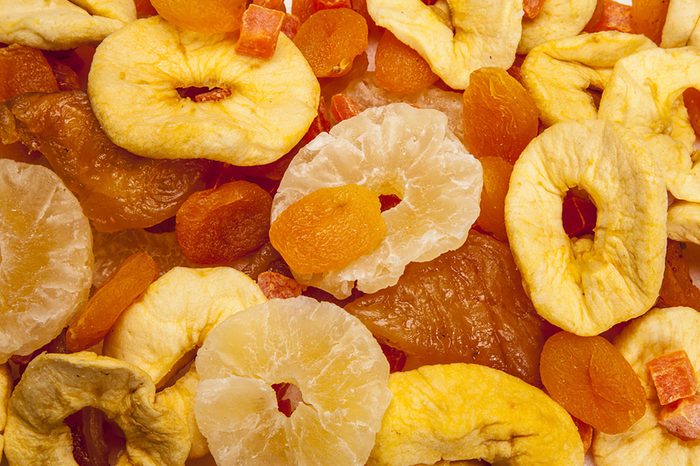
Snack on dried fruit every day
Tasty, chewy, satisfying, easy to eat on the go—and loaded with fiber. Try dried apricots, dates, figs, peaches, pears, and prunes.
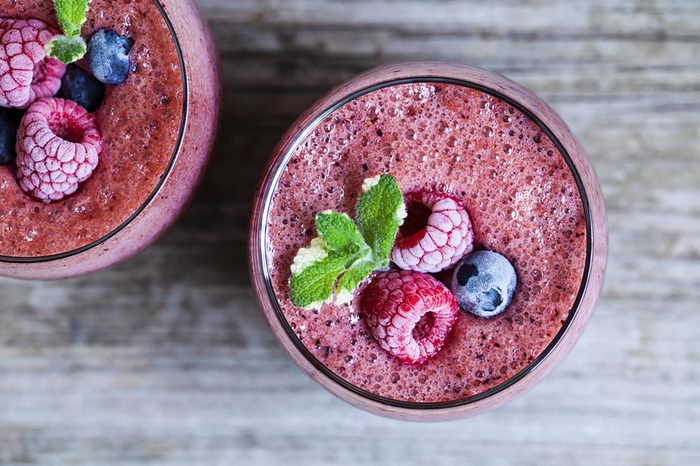
Drink your fiber
Make your own smoothies by blending whole fruits (cut out the big seeds). If everything in the fruit goes into your glass, you’ll get the fiber from the edible peel, often missing from fruit juice. Sneak in some spinach for even more fiber.

Don’t forget to drink plenty of water
You need water to help the fiber pass through your digestive system without getting, ahem, stuck. So as you’re increasing the fiber in your diet, also increase the amount of water or other unsweetened beverages you’re getting. Also, don’t up your fiber load all at once. That’s just going to overwhelm your system, leading to gas, bloating, and constipation. Instead, start slowly. Try one tip a week for the first couple of weeks, then two, then three. By week four or five, you should be up to the full 25-30 grams—or more. Next, check out these health benefits of drinking water.
